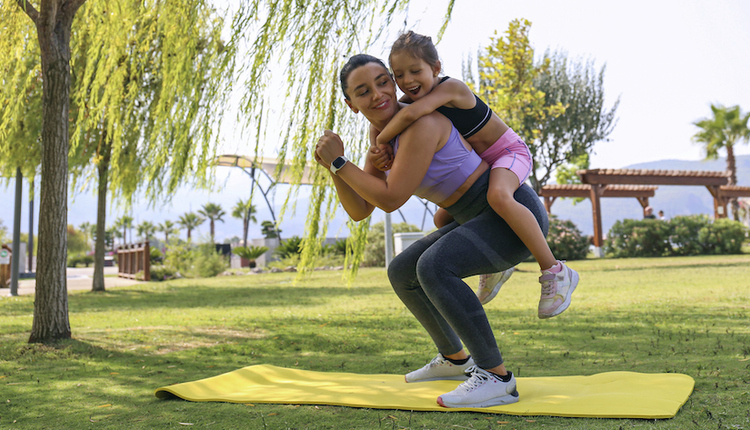
Since debates among trainers about how fit a trainer should have been a hot topic since I started as a trainer over 25 years ago, and continue rage on via social media, I wanted to address this subject in an objective manner.
This debate really involves two main questions:
- Does being fit help a trainer get more business?
- Does a trainer’s own level of fitness determine their expertise?
I’m going to address the common arguments used to address both of these issues and add some clarity to the conflicting opinions.
How You Look Does Matter to Many Potential Clients
How you look or perform doesn’t determine your level of ability to be a great trainer, as I’ll describe in the next section. However, it does matter to many potential clients looking to hire a trainer.
For example, in a study conducted to examine how the appearance and actions of female fitness instructors impacted participants’ interpretations of body image, most of the women “considered the instructor’s appearance to be a critical aspect in perceiving his/her leadership capabilities. Some women assumed that an attractive, fit-looking instructor would be a competent leader. Participants concluded that they were “more likely to accept fitness advice from an instructor with ‘an incredible body’ than from an instructor who was ‘a little heavier.”
The results or another study showed that 19 out of 20, which is 95% of participants, indicate that a personal trainer should appear physically fit. The people surveyed perceived that if a personal trainer was out of shape or deemed unfit, his or her training program may be ineffective.
The author of this paper stated the results they found “compare favorably with earlier studies regarding appearance in the fitness industry and body image.”
In short, as fitness professionals, we are often judged by more outward ‘credentials (i.e. fit, muscular, lean, etc.) because many potential clients view that as possessing physical proof of competency.
This doesn’t mean you’ve got to look like a Greek statue, but it does mean you look like you work out.
Of course, appearance is not such a critical component of clients’ judging a trainer’s competency if your professional focus as a trainer isn’t physique related, such as trainers who focus on working with people with mobility, pain or medical limitations.
That said, using your social media to highlight your ability can help switch the focus potential clients have from appearance to the skillset each trainer possesses.
Might Doesn’t Make Right!
Now that I’ve covered how potential clients judge trainers, it’s time to address how trainers often judge one another’s competency.
One of the most prolific training myths is that the biggest, strongest or leanest people in the gym or on social media are always the most qualified to give smart, safe and reliable training advice information. Sometimes they are, but often they’re not!
First off, this whole idea that one must have personally achieved a certain level of success in a sport in order to be a reliable source of technical information (i.e., the intellectual aspects of training) is demonstrably false. Look no further than the professional sports for proof. Many of the best players turn out to be terrible coaches, while others who have never even played the game turn out to be top-notch coaches who’ve helped many athletes realize their potential. This is because where these coaches excel is in possessing not just a deep knowledge of the technical and tactical aspects of the game (i.e., the X’s and O’s), but they could also simplify and communicate that knowledge in a way that athletes can use to their advantage. The same thing can be said for trainers and coaches.
Heck, none of Michael Jordan’s coaches were nearly as good as he was at playing basketball, but they were able to help him to realize his potential. Not to mention, saying that you’re not qualified to coach someone unless you’ve had personal experience in the same arena is to say that male trainers can’t effectively train female clients because they don’t have any personal experience having a menstrual cycle, exercising while pregnant, being constantly goggled at by creeper dudes at the gym, etc. Males absolutely can train females on the technical and tactical aspects of exercise programming (i.e., the intellectual aspects of training), but it’s the emotional and psychological aspects of training and competing that can be better related to from another female with experience in that same arena.
Secondly, the biggest, leanest and fittest people have often achieved their results despite what they (think) they know and what they don’t know, not because of it. They’re gym rats who focus on organizing their lives around gyms and kitchens. Although they might be a great resource to you on the emotional and psychological aspects of disciplined training and dieting and can share the experiences they’ve had in doing so, they’re often not so great to rely on for the intellectual aspects of training, such as an understanding of the principles of biomechanics and physiology (along with the current research) that determine how to best individualize a training program based on your goals, abilities and medical profile.
It’s important to consider that the more time you spend in gyms and kitchens (i.e., on keeping your own gym rat card), the less time you’re able to spend on learning the technical and tactical aspects of programming necessary to make you qualified to provide reliable advice and information to other people.
Fitness Professionals vs Hobbyists
Put simply, there are trainers who act as fitness professionals and others who act as fitness hobbyists. Fitness hobbyists tend to spend most of their educational time and money learning about the training concepts and techniques that they themselves think are aligned with their own training goals instead of learning better and more effective ways to help clients achieve their goals. And, because of this they usually do something to the client instead of doing something for the client by providing a training direction based mostly on their own chosen training philosophy (i.e. bias) rather than delivering a true “personalized” workout program.
In other words, these trainers often end up giving their clients private lessons on what they like to do instead of using the best modalities for the client to achieve their goals.




















